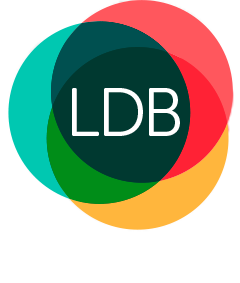Tax for medical professionals: Personal Services Income (PSI) and service entity arrangements
August 19, 2019

The tax implications of Personal Services Income and service entity arrangements can have a big impact on medical professionals setting up their own practice.
Starting a new practice is an exciting time however, there are a range of tax questions healthcare professionals need to answer before opening for business.
Sorting out areas like Personal Services Income (PSI) and service entity arrangements properly at the start will save you time, energy and money down the track.
Let’s take a look at what PSI and service entity arrangements are and what they mean for medical businesses.
What is PSI?
PSI is income generated mainly from the personal services or efforts of an individual and can apply to almost any industry or profession.
For health professionals, this would be medical assessments and advice provided to patients.
PSI can determine how a business distributes its income among shareholders or beneficiaries, as well as how the business claims deductions.
When the PSI rules apply, the income generated by a health professional is treated similarly to sole traders tax-wise, regardless of the business structure in place.
An example of the PSI rules is where profit has been generated by a trust. In general, profits from a trust can only be distributed to beneficiaries of that trust. However, if the income earned is solely from the efforts of the individual health professional, then the PSI rules may require that income is passed out directly to them personally and not out to any other beneficiaries as may be ordinarily allowed. This limits the ability to spread wealth and reduces tax planning opportunities.
Does PSI apply to me?
The ATO has set out guidelines detailing whether or not the PSI rules apply to a taxpayer’s circumstances.
There are four steps to determine whether the PSI rules apply to you or not:
- Is the income mainly from reward for personal services or efforts?
If the answer is yes, move onto question 2.
- Does the taxpayer pass the results test?
The results test requires the taxpayer to be paid for a specific result, required to provide their own equipment or tools, and be required to fix mistakes at their own cost. Generally, this doesn’t apply to health professionals.
- Does the taxpayer pass the 80% rule?
The 80% rule applies when more than 80% of a taxpayer’s PSI comes from one client.
To work this out, the taxpayer needs to find out how much income is derived from each client during the financial year and then how much PSI they received in the same period. The results of this test will vary widely depending on the setup of your practice.
- Apply the other tests
There are other tests to consider too:
Unrelated Clients Test – this looks at whether the taxpayer receives PSI from two or more unrelated parties.
Employment Test – relates to whether the taxpayer’s business employs or contracts others to help carry out the services that derive PSI.
Business Premises Test – taxpayers must ensure their premises are in a certain location, as well as other criteria related to the usage of the premises, to avoid qualifying for PSI.
The taxation implications of PSI applying or not applying will directly affect the ability to distribute or share income between a group of people or beneficiaries. It will also affect the where the deductions associated with the business can be claimed.
The process of determining if PSI applies can be tricky and time consuming. Getting the right advice is important to ensure that you are treating your income correctly from a tax point of view.
What are service entity arrangements?
A service entity arrangement typically involves a group of health professionals setting up a medical practice, whereas an entity such as a trust or company is set up to provide services back to the medical professionals or practice who can then focus on providing professional services to their clients.
A service entity will normally be set up to provide support to medical professionals by way of clerical and administration services which can include the cost of staff hire, recruitment, renting of a premises, the cost of plant and equipment incurred, also other various business and overhead expenses. It may also be the entity that owns the building the practice operates out of and collects rent from the operating (patient facing) entity.
The benefit of a service entity is that any profits earned each year by an entity, such as a trust, can be distributed legally and tax effectively to other family members or associates of the health professional rather than to the health professional themselves. This is because we are clearly distinguishing income earned from service fees and potentially rent from income earned from client fees, which as discussed above, will mostly be considered PSI.
Service entity arrangements are accepted by the ATO as legitimate and can be quite beneficial in terms of wider tax planning opportunities, so long as the rules are followed and relevant tax law is adhered to.
Need expert advice?
The implications of Personal Services Income and service entity arrangements are complex, so it’s important to get the right support and advice when setting up your healthcare business.
LDB has experience with helping businesses in the medical sector to navigate everything from tax to billing and business advice.
To find out more, give us a call (03) 9875 2900 or fill out the contact form below and we’ll be in touch.
